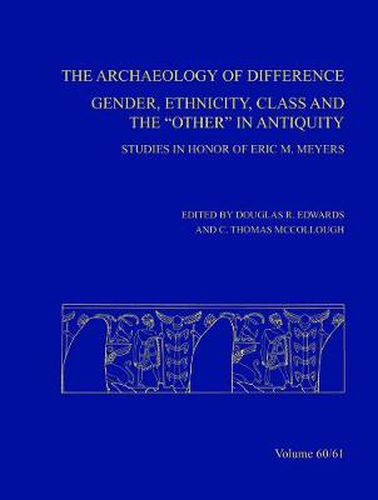Readings Newsletter
Become a Readings Member to make your shopping experience even easier.
Sign in or sign up for free!
You’re not far away from qualifying for FREE standard shipping within Australia
You’ve qualified for FREE standard shipping within Australia
The cart is loading…






What distinguishes an individual or a group in ancient society? How do issues of gender, ethnicity, social stratification and the view of the ‘other’ impact individuals, groups, and societal attitudes?
Foucault in his classic work, The Archaeology of Knowledge, observes that layers of information embedded in language and society often elucidate the unspoken assumptions that individuals, groups or societies hold most dear. What is perceived to distinguish one group can carry such symbolic power that whole societies structure their laws, gender roles, ethnic identities, and views toward the other in the light of perceived differences. The ancient world was dominated by such differences. Clothing, hair, costume, housing, gender, religion, set apart one from the other.
Ascertaining the rules governing difference in antiquity is challenging. Such rules were generally assumed, not clearly delineated. To determine the archaeology of difference the studies in this volume draw on textual and material culture. How does archaeological data illuminate gender or ethnicity or interactions and views of the other ? What in the archaeological evidence elucidates the attitude toward women’s role in society or Jewish perspectives on the Gentiles or attitudes toward the dead? What in texts illuminates the other especially as it relates to the writer’s or narrator’s perception?
$9.00 standard shipping within Australia
FREE standard shipping within Australia for orders over $100.00
Express & International shipping calculated at checkout
What distinguishes an individual or a group in ancient society? How do issues of gender, ethnicity, social stratification and the view of the ‘other’ impact individuals, groups, and societal attitudes?
Foucault in his classic work, The Archaeology of Knowledge, observes that layers of information embedded in language and society often elucidate the unspoken assumptions that individuals, groups or societies hold most dear. What is perceived to distinguish one group can carry such symbolic power that whole societies structure their laws, gender roles, ethnic identities, and views toward the other in the light of perceived differences. The ancient world was dominated by such differences. Clothing, hair, costume, housing, gender, religion, set apart one from the other.
Ascertaining the rules governing difference in antiquity is challenging. Such rules were generally assumed, not clearly delineated. To determine the archaeology of difference the studies in this volume draw on textual and material culture. How does archaeological data illuminate gender or ethnicity or interactions and views of the other ? What in the archaeological evidence elucidates the attitude toward women’s role in society or Jewish perspectives on the Gentiles or attitudes toward the dead? What in texts illuminates the other especially as it relates to the writer’s or narrator’s perception?